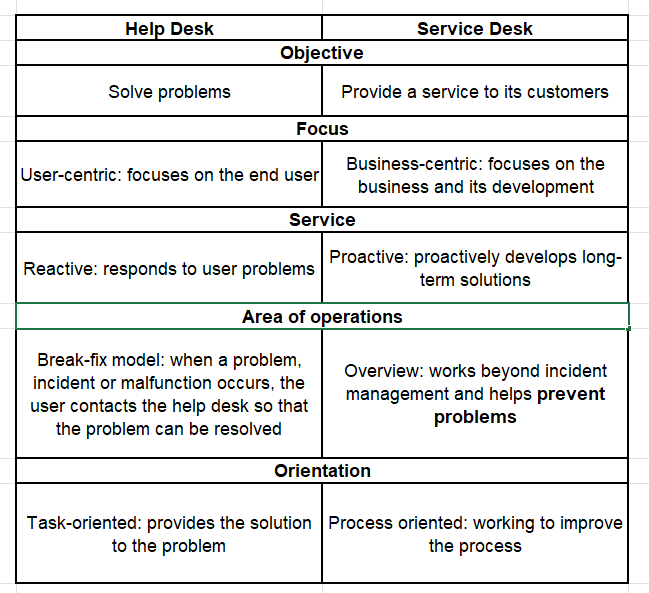Categories
Tags
Newsletter
Subscribe to the QRP International neswletter and get all the news on trends, useful contents and invitations to our upcoming events
Subscribe
Service Desk is a very important element within the ITIL Framework. In this article we will delve into its main characteristics and how it differs from a Help Desk.
The ITIL manual defines the Service Desk as “the single point of contact for users in the event of a service interruption, for service requests, and for certain categories of change requests. The Service Desk provides a communication point for users and a coordination point for various IT groups and processes”.
In a practical sense, the Service Desk is a communication centre where customers, employees and other stakeholders, can receive support and troubleshooting from their IT suppliers.
The term ‘Service Desk’ is very broad and can refer to different kinds of resources: in some organisations it is identified with a specific function or team. The team may also be involved in other activities related to ITIL Practices, like Service Desk, Incident Management, Service Request Management, Problem Management, etc.
In order to be able to satisfy customers, a Service Desk must be centred around communication channels that are efficient and effective, ensuring a flow of communication between customer and provider. In most cases, the Service Desk is working on multiple channels that are organised in an effective way, as to provide an experience that is simple and convenient for all stakeholders involved.
This is referred to as Omni-channel Communication. This can be defined as “Unified communications through multiple channels that are used to share information across channels to provide a seamless communication experience ”.
There are three categories of Service Desk, which are:
This is a Service Desk that acts as a hub of interaction for any query and solution. Everything is done through a single point of contact and the strengths of this type include:
A Localised Service Desk is located close to or within the organisation for which it operates and it is best suited to the needs of small and medium-sized enterprises. It is particularly suitable for:
This type of Service Desk is the most common: no matter where it is located, all that is needed is an Internet connection and a device. A virtual Service Desk ensures:
The main objective of a Service Desk is to provide customers with high quality service in a timely manner. The most important activities performed by a Service Desk in order to achieve this goal are:
Given their similar names and functions, these two terms are often confused, but it is certainly important to clarify the differences between Service Desk and Help Desk.
The Help Desk mainly operates in the “break-fix” area, i.e. when something breaks down or a problem occurs, users request support and intervention from the Help Desk.
The main task of a Help Desk is to solve problems, whereas a Service Desk focuses on providing a service to its customers.

After the ITIL Foundation training, IT professionals in charge of the Service Desk can continue their ITIL training with the Monitor, Support & Fulfil course.
This is a combined course consisting of practical modules that offer shorter and more flexible training. The course includes the 5 practices:
If you are interested, visit our ITIL Monitor, Support & Fulfil web page or contact us!